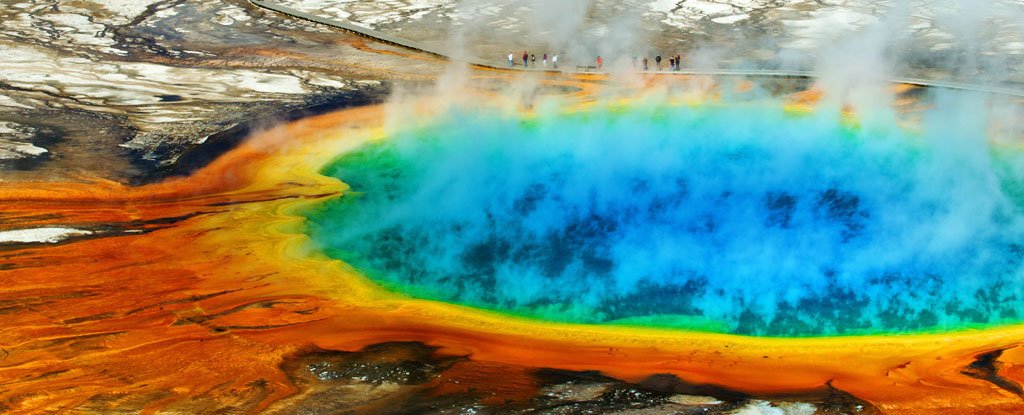
Extensive research on Yellowstone supervolcano reveals transition zone and inner working of a volcano
Yellowstone Supervolcano which last erupted about 630,000 years ago is still an intriguing subject for researchers worldwide. Many researchers have been conducted which has gleaned results about its turbulent history. The supervolcano that last erupted more than half a million years ago is nowhere even near to erupt in our lifetimes but researchers are more interested in its inner workings and how magma goes about within its eccentric and complex plumbing system that lies beneath the giant volcano. A recent study conducted by a group of scientists may have the answer for it. The team used state-of-the-art computer modeling technique in order to ascertain the inner working and the plumbing system wherein the Magna flows through and other details.
The study published in the journal Geophysical Research Letters states that researchers used computer modeling in order to ascertain the behavior and working of the magma reservoirs and the piping system beneath the humongous supervolcano. Researchers took reference of a previous study which explained about the two magma reservoirs beneath the surface of the volcano where the first reservoir is located just below the surface and another is located 12 to 27 miles deep in the surface. The gleaned data was fed into the computer modeling system which showed that there could be a crustal transition zone or a divisionary sill between the two reservoirs which is still undocumented.
As per the new study, the crustal transition zone is defined as a shelf or sill measuring between 6.2 to 9.3 miles and it is located about 6 miles beneath the surface thus dividing both the magma reservoirs where the cold and hard rocks situated in the upper crust give way to partially molten rocks. This occurrence traps the hot magma rising into another level and thus, solidifies in the sill with a span of 9 miles in thickness. The upper reservoir is made up of rhyolitic, gaseous rocks which can escape from the volcano through eruptions. The upper layer has been quoted as incredibly violent explosions by a news website. Another news portal quoted that the researchers are on the right direction towards deciphering the magmatic features of volcanoes. It will also help in decoding other volcanoes around the world by comparing the data and obtaining the required results.
The researchers stated that the study wouldn’t help in predicting future eruptions, however, it depicts a closer look towards the inner working of the volcano’s plumbing system with magma flowing through it that fuels volcanic eruptions. There have been independent studies on forecasting the next eruption on the Yellowstone Supervolcano according to which, the hints for such a catastrophic event are strong earthquake swarms and ground deformation which starts few days before the eruption and continues to exhibit until the actual eruption occurs.


